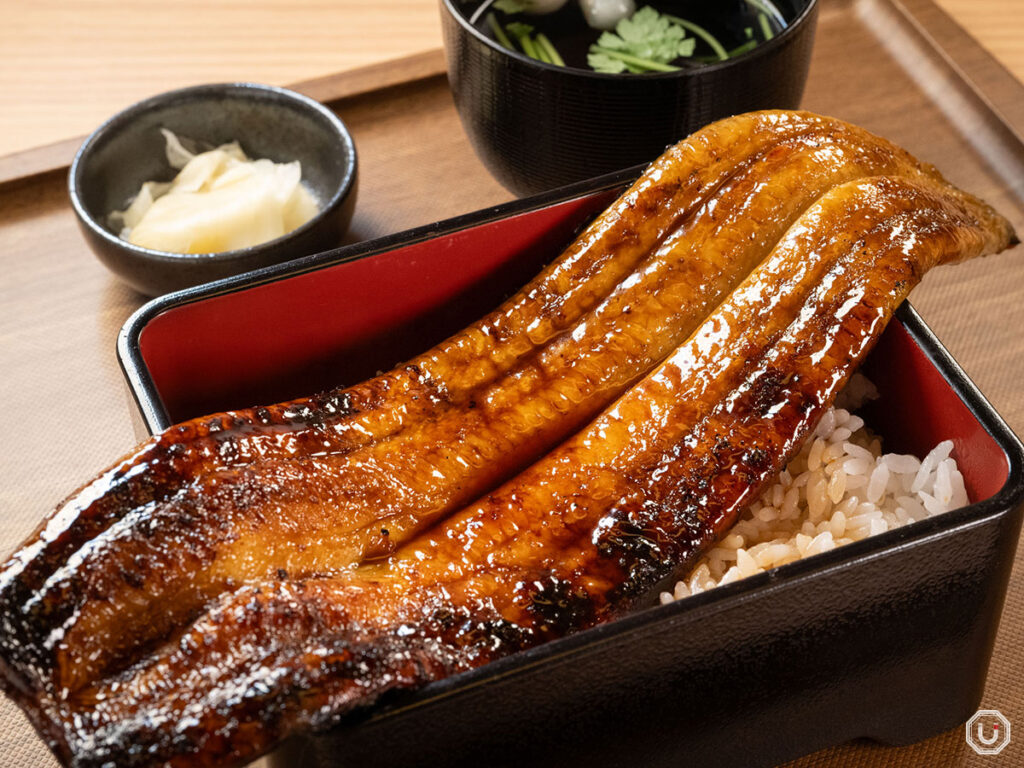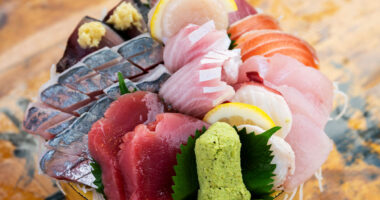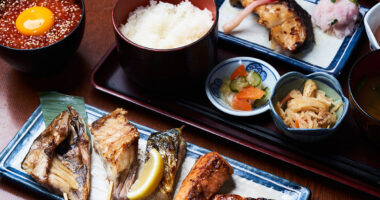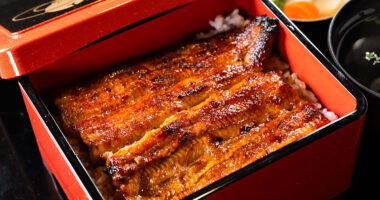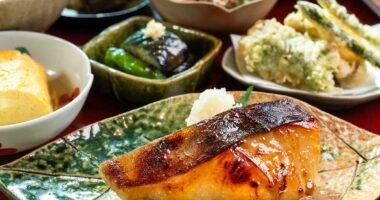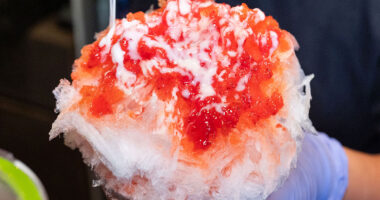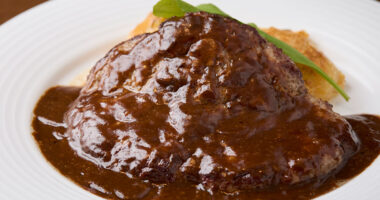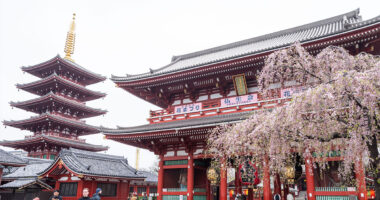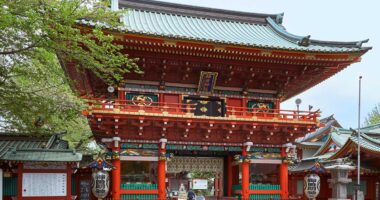Summer in Japan is a battle against both stifling humidity and the blazing sun. Even so, people have long found creative ways to embrace and enjoy the season.
One of the most beloved ways of handling the heat is through food.
Japanese summer dishes are not just about flavor and appearance—they also embody the feeling of the season. Some cool you down with refreshing tastes, while others help restore energy to bodies worn out by the heat.
In this article, we’ve picked out five iconic summer dishes, plus a few bonus seasonal specialties.
From home-cooked favorites to limited-time restaurant menus, each one reflects the delicate flavors that define Japanese cuisine. If you spot them while traveling in Japan, don’t miss the chance to try. Through food, you may feel the season of summer in Japan a little closer.
Unagi: eel dishes
You can’t talk about summer food in Japan without unagi (eel). The custom of eating eel on Doyō no Ushi no Hi (“Day of the Ox”), a midsummer tradition unique to Japan, is especially famous.

Unaju (Deluxe) at Unasho
This practice is said to date back to the Edo period, when people began eating nutritious eel to regain stamina during the hottest days of the year. The date changes annually, sometimes even occurring twice, but it typically falls between late July and early August.
The most popular way to enjoy it is unajū—grilled eel glazed with a sweet-savory sauce, served over steaming rice in a lacquered box.
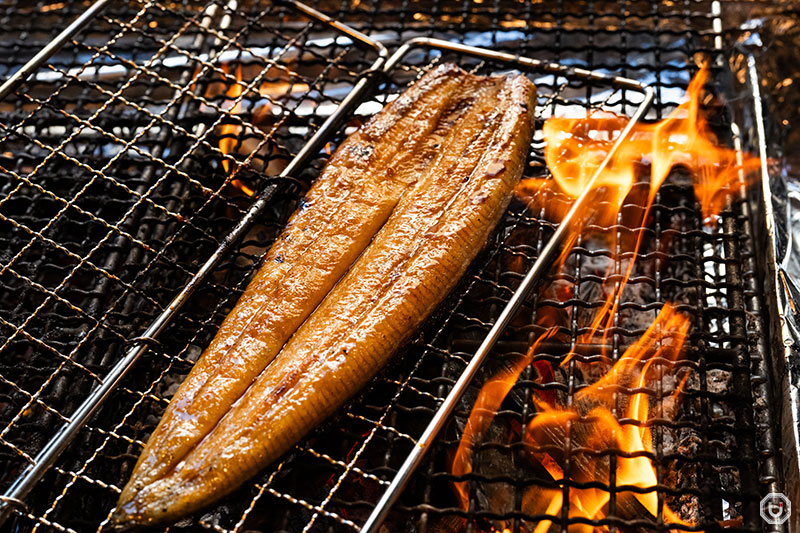
Grilling unagi at Makiyaki Unagi Ginza Onodera HONTEN,
Lift the lid, and a fragrant aroma rises up, followed by the perfect harmony of rice infused with sweet soy-based sauce—a true taste of summer in Japan.
One of the best recommendations is the “Domestic Unaju Special” at “Makiyaki Unagi Ginza Onodera HONTEN” in Akasaka.
Although the price of eel has risen year by year, here you can enjoy a generous portion so large it spills over the edges of the box, all at a surprisingly reasonable price. Grilled over firewood, the plump, smoky eel delivers a satisfaction well beyond its cost.
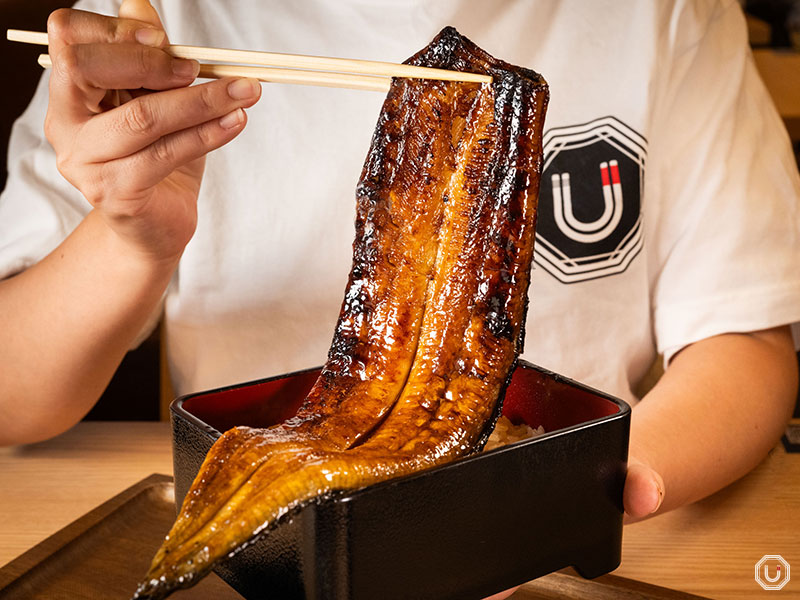
Domestic Unaju Special at Makiyaki Unagi Ginza Onodera HONTEN
For those who prefer to enjoy the natural flavor of eel in a lighter way, shirayaki is also highly recommended.
Prepared without sauce, the eel is steamed and then grilled, and enjoyed with wasabi or a sprinkle of salt for a clean, refreshing taste.
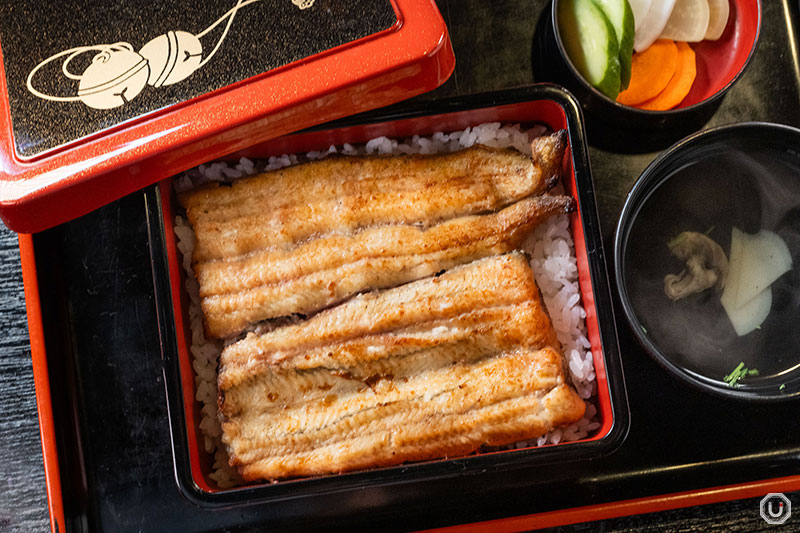
Premium Eel Box without Seasoning at Unagi Kaneichi Higashi Ueno
One standout is the “Premium Eel Box without Seasoning” from “Unagi Kaneichi Higashi Ueno” in Ueno.
You can enjoy it in countless ways—sprinkled with the refreshing spice of sanshō (Japanese pepper), paired with a touch of sea salt for a light finish, or accented with the sharp kick of wasabi.
Simple yet profound, it’s a dish that reveals a whole new side of eel.
Sōmen noodles
Even on hot summer days when appetite wanes, sōmen (thin wheat noodles) offers a refreshing, smooth bite. Typically boiled, chilled in cold water, and dipped in mentsuyu (soy-based dipping sauce), it’s a summer staple with a light, crisp flavor.
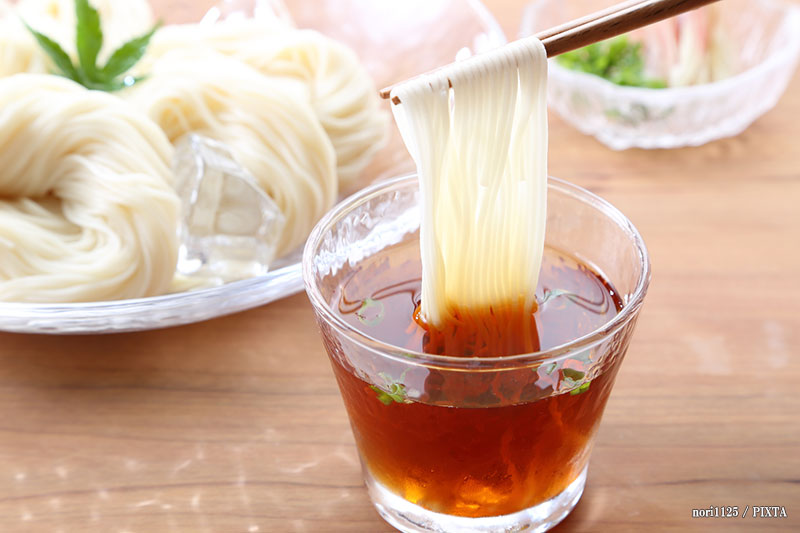
Somen (photo for illustrative purposes)
Recently, somen has evolved with creative variations, featuring innovative dipping sauces or soups for a modern twist.
Located in Shibuya Hikarie, directly connected to Shibuya Station, “Somen Sososo Kenkyushitsu” is a hotspot for inventive somen. Diners can customize noodle types, toppings, seasonings, and mentsuyu, or choose original somen sets with reimagined classic ingredients.

Various dipping sauces and seasonings at Somen Sososo Kenkyushitsu
A must-try is the nutrient-packed “Neba-toro Somen.” Made with a dashi based on katsuobushi (dried bonito shavings), it’s loaded with vibrant ingredients like natto, okra, iburigakko (smoked pickled radish), cucumber, katsuobushi, and myōga (Japanese ginger).
Nattō (fermented soybeans) and okra, a traditional Japanese pairing, deliver a sticky texture and unique aroma that’s addictively satisfying.
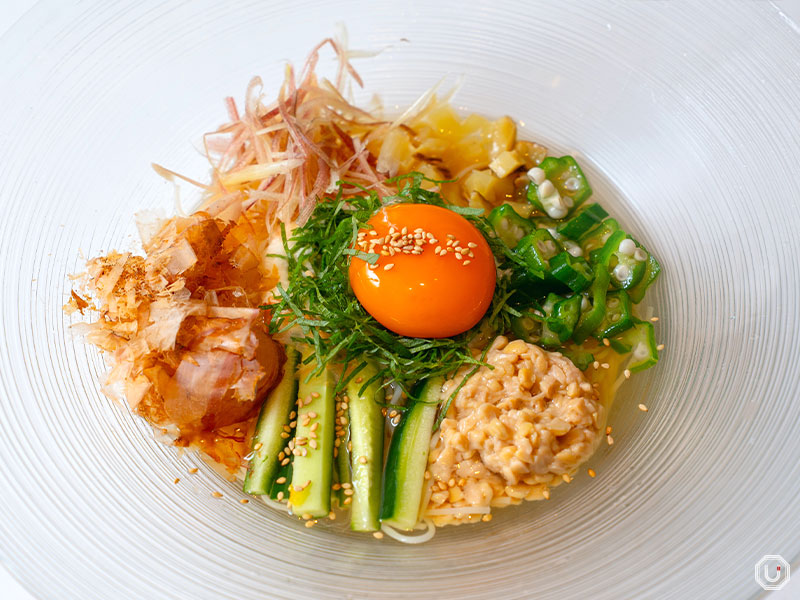
Neba-toro Somen at Somen Sososo Kenkyushitsu
Somen Sososo Kenkyushitsu offers an accessible way to enjoy evolved somen, perfect for those seeking a fresh take on Japan’s summer cuisine. Experience this modern somen culture, blending tradition with freedom.
Hiyashi chūka noodles
Hiyashi chūka (chilled ramen) is a beloved household dish. Chilled Chinese noodles are topped with julienned cucumber, chāshū (Japan’s version of char siu), shredded egg slices, and tomato, dressed with soy or sesame-flavored sauce for a refreshing meal.
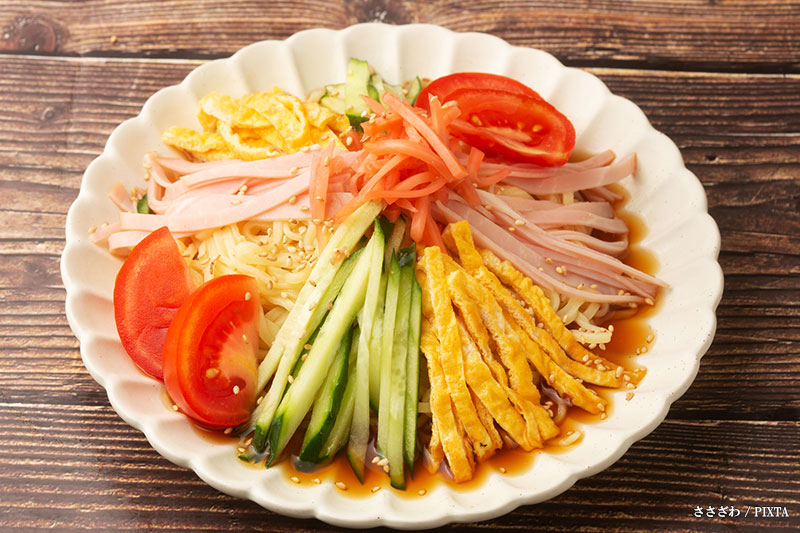
Hiyashi chuka (photo for illustrative purposes)
Its vibrant look, smooth texture, and tangy sauce make it ideal for hot days.
For a unique twist, Yoyogi’s ramen shop “Menkoidokoro Isoji” serves an exceptional hiyashi chuka. Visually striking and lavish, it features char siu, baby corn, seasoned egg, tomato, cucumber, grilled eggplant, shiso, nori seaweed, and daikon radish sprouts for a salad-like bowl.
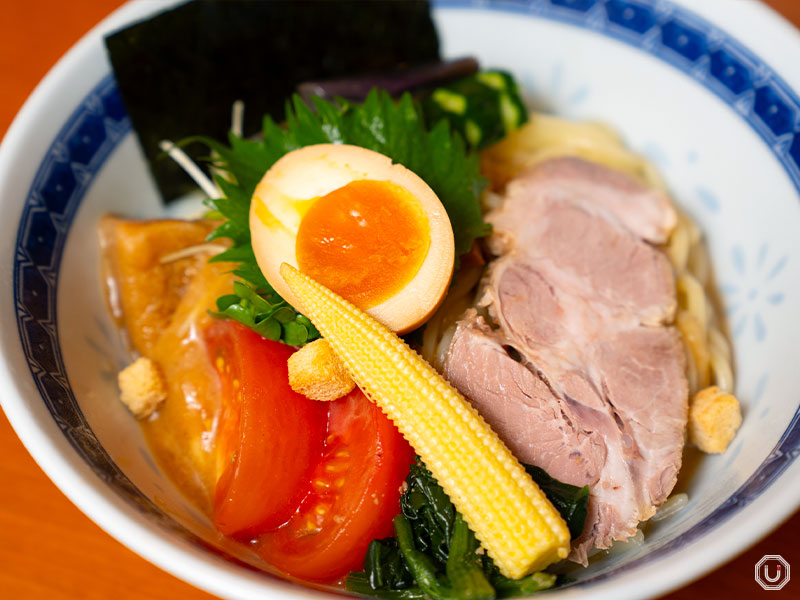
Hiyashi Chuka at Menkoidokoro Isoji
Unlike typical soy-based sauces, Menkoidokoro Isoji uses a tangy fish-pork bone broth, blending delicate dashi aromas with deep umami that spreads across the palate.
Despite its rich appearance, it’s surprisingly light with a clean aftertaste.
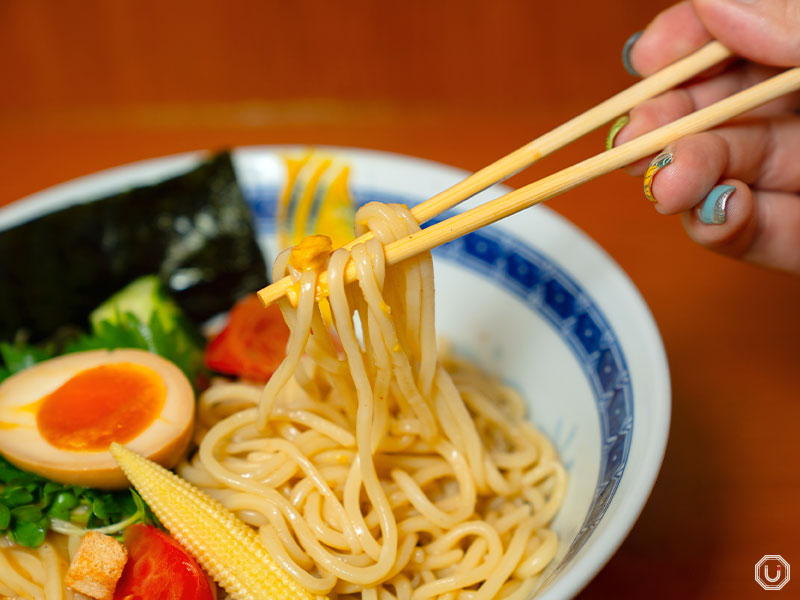
Hiyashi Chuka at Menkoidokoro Isoji
Mix thoroughly to blend the colorful toppings, where flavors, aromas, and textures harmonize, evolving with each bite, redefining hiyashi chuka’s classic appeal.
Hiyajiru
Hiyajiru (cold miso soup), a traditional dish from Kyūshū, especially Miyazaki, has become a national summer favorite.
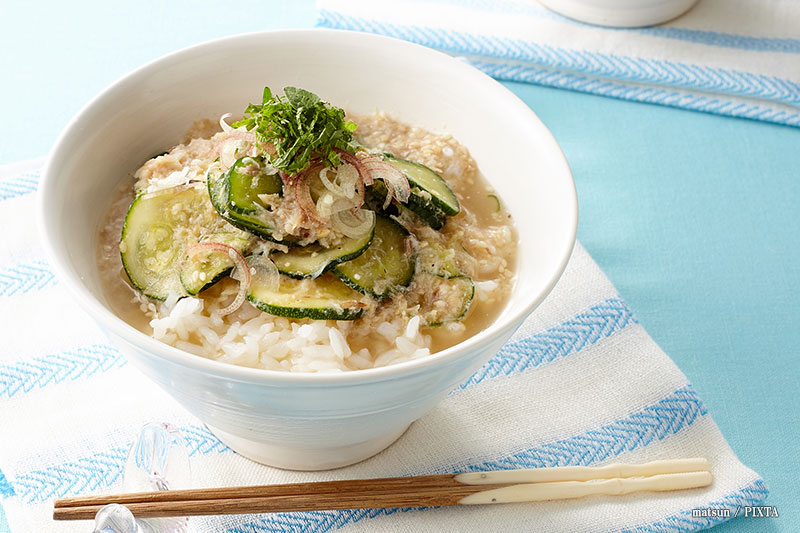
Hiyajiru (photo for illustrative purposes)
Hiyajiru combines cold miso-fish broth with crumbled tofu, sliced cucumber, myoga, and other aromatics, poured over rice. Its refreshing taste, fragrant toppings, and miso-fish umami make it surprisingly easy to eat despite summer heat.
Nakano’s ramen shop “Miso ga Ichiban” offers a modern twist with its summer-limited “Hiyajiru Tsukemen.”
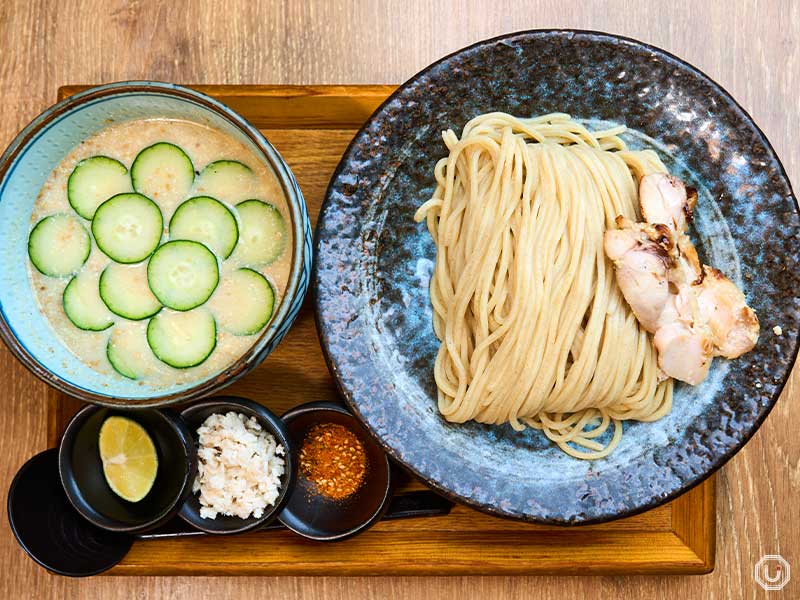
Hiyajiru Tsukemen at Miso ga Ichiban
Replacing rice with noodles, the Hiyajiru Tsukemen features a chilled miso-based dipping broth. This refreshing sauce balances gentle miso flavors and fish umami, delivering lingering deliciousness.
Blending hiyajiru’s tradition with a novel format, it expands summer dining possibilities.
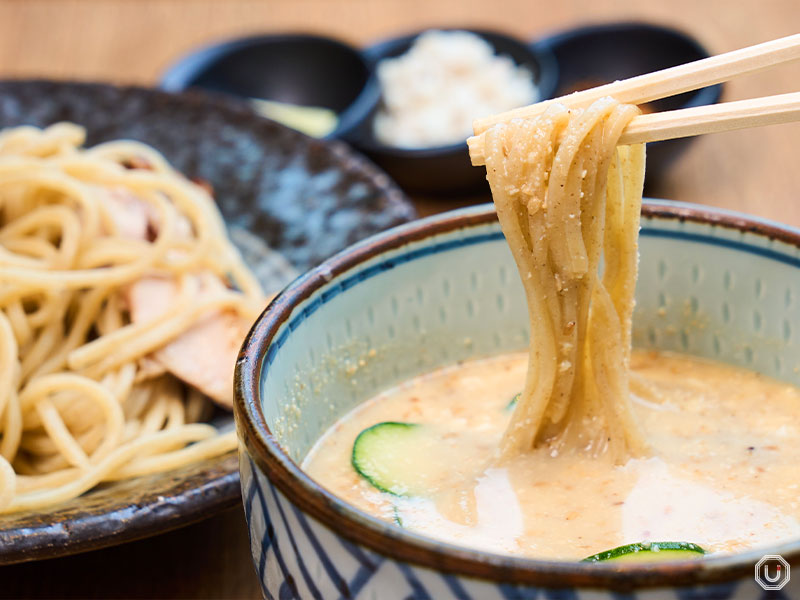
Hiyajiru Tsukemen at Miso ga Ichiban
Summer vegetable dishes
Summer brings a bounty of sun-ripened vegetables like eggplant, kabocha, shishito peppers, corn, and tomatoes, starring in vibrant dishes at homes and restaurants across Japan.
At Asakusabashi’s sake bar “KAMOSU,” seasonal menus highlight these summer vegetables. A crowd favorite, “Sweet Corn Tempura” bursts with sweet corn kernels in a crispy batter, delighting all ages.
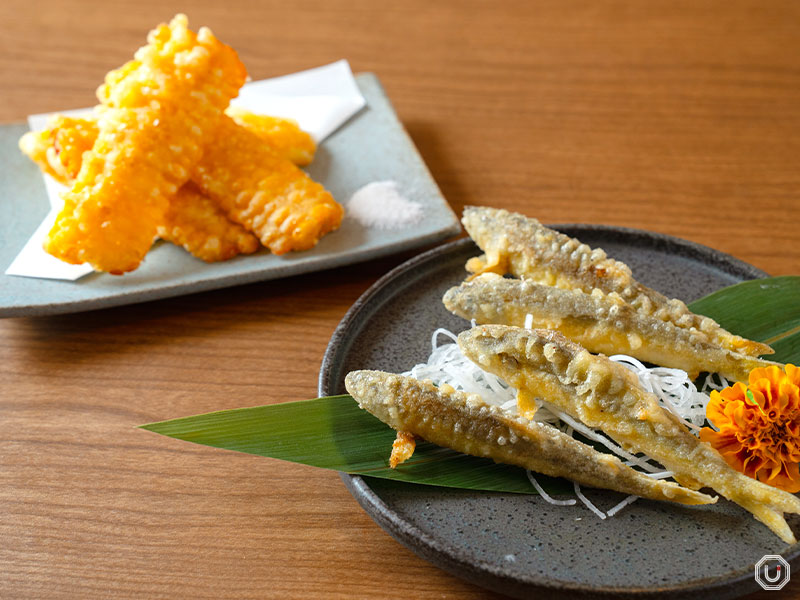
(left) Sweet Corn Tempura (right) Ayu Tempura 600 at KAMOSU
The perfect balance of crunchy coating and sweet ingredients ensures smiles. Another gem, the “Summer Vegetables Steeped in Dashi,” features grilled eggplant, zucchini, and bell peppers soaked in chilled dashi for a refreshing, umami-packed taste.
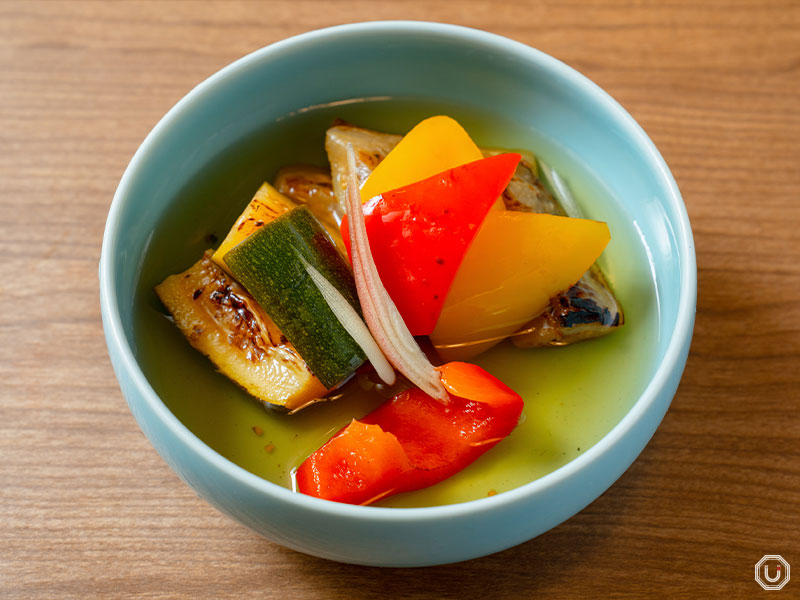
Summer Vegetables Steeped in Dashi at KAMOSU
With vegetables varying daily, each visit offers a fresh taste of the season, capturing Japan’s summer essence.
Bonus: chilled oden
Oden (hot pot stew) is a winter favorite, but a summer version exists. At “O’denbar Umami Azabu-Juban,” seasonal cold oden delivers chilled dashi’s umami.
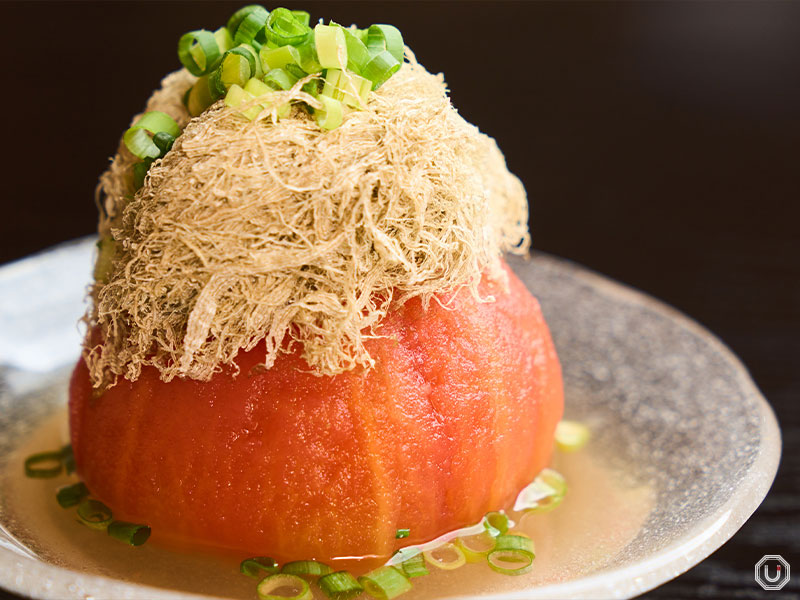
Chilled Tomato Oden with Shredded Kelp at O’denbar Umami Azabu Jūban
A popular choice, “Chilled Tomato Oden with Shredded Kelp,” features a whole peeled tomato soaked in dashi, topped with finely chopped tororo kombu (shredded kelp). The kombu’s unique flavor and sticky texture enhance the dashi-infused tomato’s depth.
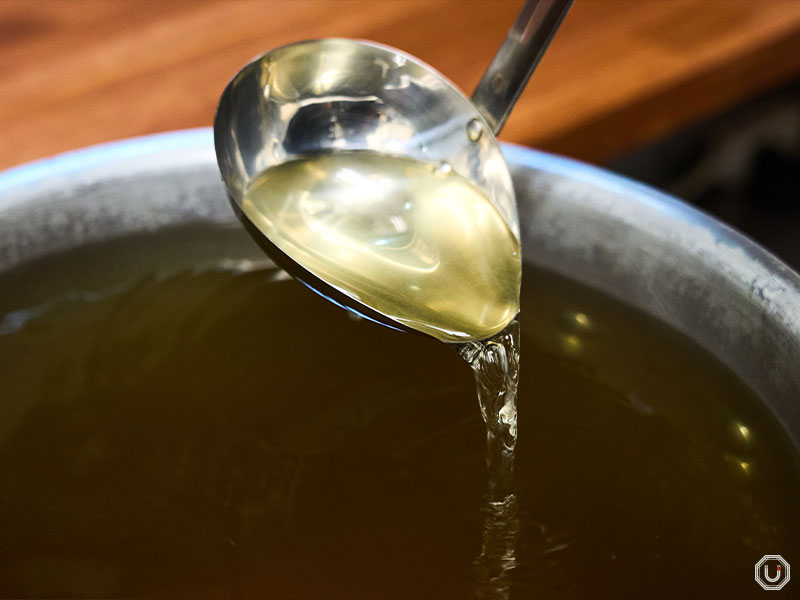
Dashi for oden at O’denbar Umami Azabu-Juban
The clear, golden dashi, crafted from kombu and katsuobushi, balances rich umami with a clean, crisp taste even when chilled.
Bonus: reimen
Reimen (cold noodle soup), originating from the Korean Peninsula, is a summer staple in Japan, especially alongside yakiniku (grilled meat cuisine). It’s a menu mainstay at specialty restaurants.
As a pleasant surprise, O’denbar Umami Azabu-Juban offers a summer-limited reimen called “Oden Shop Chilled Noodles in Oden Broth,” using chilled oden dashi.

Oden Shop Chilled Noodles in Oden Broth, at O’denbar Umami Azabu-Juban
Unlike typical beef or chicken-based reimen broths, this uses kombu-katsuobushi dashi, delivering clear, umami-rich flavor with a gentle, layered taste.

Oden Shop Chilled Noodles in Oden Broth, at O’denbar Umami Azabu-Juban
The smooth, chewy noodles pair with the chilled dashi, offering refreshing relief from summer heat.
On hot summer days in Japan, there are many dishes that help you feel cool and refreshed.
Made with seasonal ingredients and crafted with creativity in both flavor and presentation, these classic summer dishes not only cool you down but also give you energy.
From traditional favorites to inventive modern takes, the variety is truly impressive.
By enjoying Japan’s unique summer flavors, you can also discover the joy of savoring the season itself.
※Menu contents, prices, store information, etc. are current as of August 2025.
